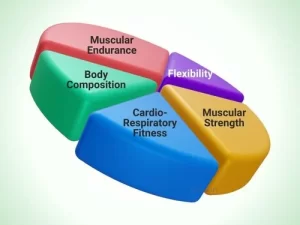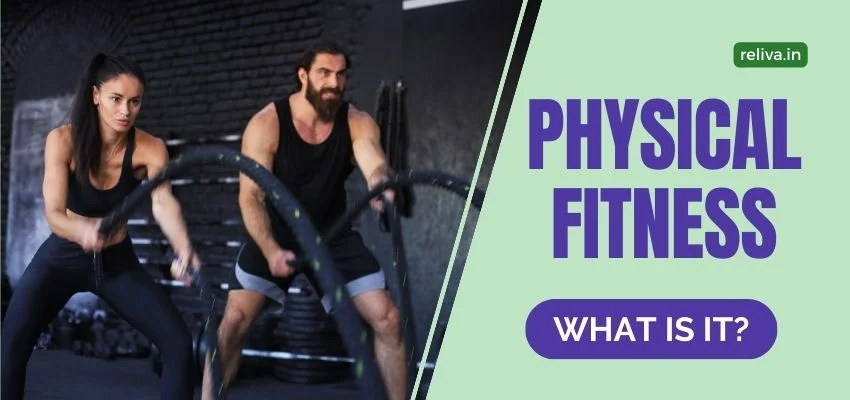When you say the words – “Physically Fit” ; the mind begins to immediately picture a smart looking person who has a well-shaped body and is pleasant to look at. But is that all, that is there to being physically fit?! It is important to understand the components of Physical fitness. Health, body shape, diet (macro nutrients and micro nutrients), body strength, cardiac endurance, flexibility – these all may turn out to be effective fitness tests.
WHO report published in October, 2022 states that Increased levels of physical inactivity have negative impacts on health systems, the environment, economic development, community well-being and quality of life.
The importance of physical activity and fitness cannot be emphasized enough.
We help you understand the different components of being physical fit in this post.
What does it mean to be physically fit?
Of course, a pleasant looking body is one of the most tangible positive outcome of being physically fit, but there are a lot of other measures that go into gauging one’s Physical Fitness! One needs to consider all of these components to qualify as being physically Fit!
Components of Physical Fitness
Here are the 5 components of being physical fit – decoded for you

1. Flexibility:
Flexibility is the range of motion of a person, or one’s ability to move joints without feeling any discomfort or pain. There is a certain range of motion for each joint in the human body. Flexibility can be improved by stretching the joints and muscles of the body. Yoga is one of the most popular activity to improve Flexibility.
2. Muscular Endurance:
Muscular endurance is the ability of the muscles to perform continuous without fatigue. Example of activities that help build up muscular endurance are cycling, step machines and elliptical machines.
3. Muscular Strength:
Muscular strength refers to how much power your muscles have. Simply put, this is how much you can lift or carry. Muscular strength is often improved through strength training like push-ups, bench press etc.
4. Cardiovascular Endurance:
The thudding sound you hear in your chest when you run or cycle hard is what points towards your Cardiovascular endurance. Simply put, it is the ability of the heart and lungs to work together to provide the needed oxygen and fuel to the body during sustained workloads. Activities such as brisk walking, running, cycling and swimming usually help improving Endurance. People who have just suffered a cardiac episode are usually advised to go for Cardiac Rehab to build up their endurance in a safe way.
5. Body Composition:
Body composition is the amount of fat mass compared to lean muscle mass, bone and organs. One has a physically fit body if he/she has a low body fat and a lot of muscle mass (in addition to meeting the above mentioned categories). Body composition is improved by exercising or working out.
A word of caution here is that all the above categories of Physical fitness can be achieved not just by Exercising and workout alone, it is equally important to achieve it along with proper Nutrition for the body.
Irrespective of your current activity levels, you can gradually build up your activity levels as well as intensity of physical activity- get started today to be physically fit soon enough!
If you are not sure of physical activities that are safe and appropriate for you or a loved one, connect with our experts and we would be happy to help! ReLiva physiotherapists regularly conduct fitness assessments and provide tailor-made fitness programs to encourage elderly, children pregnant women as well as adults to achieve recommended physical activity levels in a fun and engaging manner.
Connect with us at a ReLiva physiotherapy clinic near you or ask for a physio home visit.
Stay active. Stay Healthy!
Related Reading:
No time for exercise? 10 tips to get moving
Healthy & Positive Habits to Protect you from Stress
Stretching Exercises : How to Make the Most of it
Have Pain? Go for Professional Help
Speed up your recovery with Physiotherapy





